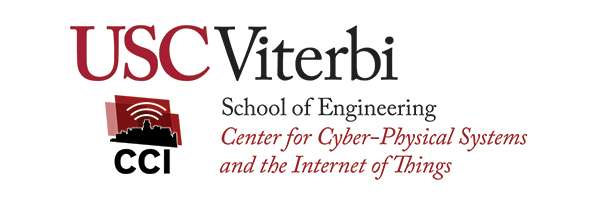I3 Consortium Action Cluster
| I3 Consortium Action Cluster | |
|---|---|

| |
 I3 Consortium | |
| Team Organizations | 23+ companies in total; including Verizon Warner Bros Tech Mahindra and more |
| Team Leaders | Jerry Power |
| Participating Municipalities | City of Los Angeles |
| Status | Concept only Stage |
| Document | [[File:Tech Jam Presentation|Download]] |
Description
The I3 project is creating a tool that will allow independent device owners to directly manage how the data streams from their IOT devices are delivered to applications. Opensource Project software includes support for privacy, trust, and incentive management.
Requirements and proof-of-concepts complete. Consortium management structure in process. Demonstration systems in process. R1.0 beta software in design.
Challenges
Communities are currently approaching smart cities deployments as a series of siloed structures. It is difficult to turn silos into networks which allow data to be leveraged between known and future applications and devices.
Solutions
I3 injects a user-directed routing system between silos so individual data streams can be managed (activated, deactivated, etc) over time as devices, applications, and services evolve over time.
Major Requirements
• Create open consortium operational framework that allows wide range of participants in the program • Prioritize features from master requirements and contributed proof-of-concept development efforts • Schedule beta development/integration efforts and testing in operational settings • Release demonstration/field trial software for consortium level testing • Release opensource software for general availability
Performance Targets
| Key Performance Indicators (KPIs) | Measurement Methods |
|---|---|
|
The goal of I3 is to increase the leverage of IOT device data within a city or some other smart community. For example, if a single IOT device can drive 2 applications instead of one, it means the IOT device and deployment costs can be amortized over two applications instead of one. In some situations, this means the city does not have to reinvest in dedicated IOT devices for the second application. The greater the leverage ratio, the lower the justification threshold (and possibly funding requirement). |
Costs can be be modeled for an siloed approach to IOT and these costs can be compared to an I3-centric network approach. |
Standards, Replicability, Scalability, and Sustainability
The I3 project is an opensource project with the expectation that the I3 consortium members will provide software drivers (standard and non-standard) needed to support their devices and applications.
Cybersecurity and Privacy
The I3 system is a real-time IOT traffic management that distributes data in accordance with IOT device owner directives. Device owners can change their directives at any time. Permission from users, based on requests from applications, are based on recorded opt-in instructions. I3 also plans a real-time security feature that alerts on detection of misbehaving devices.
Impacts
I3 will allow IOT related expenses by the city to be minimized by providing a managed tool to that increases the leverage ratio of IOT investments. This same technology also makes more data available to applications and thereby increases their overall potential feature set (intelligence).
Demonstration/Deployment
We are planning to have a working demonstration system (with some limits on application and device support) ready for demonstration in late 2018. General availability is expected for R1.0 of the system in 2019.